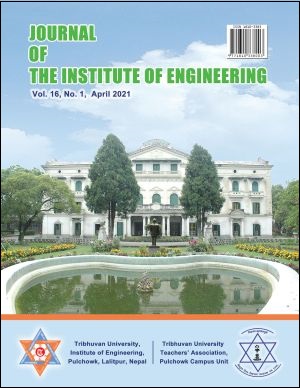Design of Pelton Turbine and Bucket Surface using Non-Uniform Rational Basis Spline and its Analysis with Computational Fluid Dynamics
DOI:
https://doi.org/10.3126/jie.v16i1.36534Keywords:
Pelton, Design, CFD, Bucket Surface, SplineAbstract
Hydraulic turbines are used to convert the energy in flowing water to rotational mechanical energy. The design of high head Pelton turbine is difficult due to complex flow pattern on different parts. The basic dimensions can be obtained from interpolation techniques and design trends but the main challenge is to model the hydrodynamic surface. The surface must be designed such that it would harvest energy in an efficient manner and the manufacturing of the surface is also economic and simple. For the design of Pelton turbine, the data from Kulekhani-I hydropower is taken. Pelton turbine is designed for the given head (550 m), flow rate (6.05 m3/sec) and speed (600 rpm). For basic dimensions, interpolation techniques and design trends are used. Number of buckets is calculated for maximum efficiency condition and found to be twenty. Nozzle and spear are selected based on hydraulic efficiency. Spear angle and nozzle angle of 70° and 100° respectively are selected. The bucket surface is designed with the help of second order B-Spline. Circular and Second order B-spline surfaces with different depths are analyzed using commercial CFD code. The second order B-Spline with depth 186.22 mm is found to be more effective in terms of force exerted by the jet among the given surfaces. Finally, Bucket surface is generated using non-uniform rational B‑spline (NURBS) modeling after all the basic dimensions are determined. For verification, the design is compared with the design of commercial design software and the turbine in Kulekhani-I hydropower plant.
Downloads
Downloads
Published
How to Cite
Issue
Section
License
The Copyright is held by Journal of the Institute of Engineering, IOE, TU




